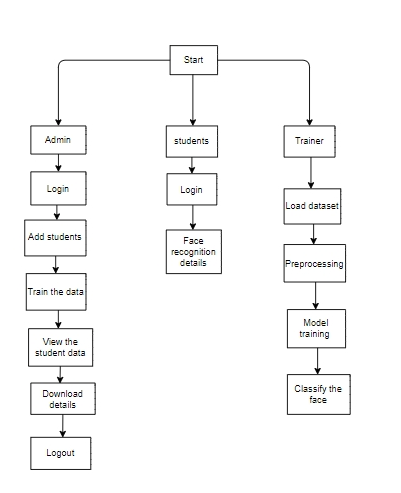Real vs Fake Detection and Face Recognition
Objective
The objective of Real vs Fake Detection and Face Recognition is to distinguish authentic content from manipulated or fraudulent material while accurately identifying individuals. Real vs Fake Detection aims to identify altered media, such as images, videos, or audio, by analyzing inconsistencies, artifacts, and anomalies introduced during manipulation. This helps combat misinformation and ensures content authenticity. On the other hand, Face Recognition seeks to recognize and verify individuals based on their facial features, enabling secure access, identity validation, and personalized experiences. Both technologies contribute to bolstering security, privacy, and trust in digital interactions, media, and authentication processes across various domains, including cybersecurity, social media, financial transactions, and surveillance.
Abstract
It is now much simpler to develop, change, and create spectacular photos because to enormous breakthroughs in image processing and AI computation. Using the development of current picture editing technologies has made it much simpler to create phone photographs and real images, such as substituting your own face with someone else's. Generic human images can also be produced using generic adversarial networks (GANs). When utilized to create distinguishable fake and real evidence, fake photographs and real images have the ability to mishandle data, hurt individuals, and cause a variety of other issues. In this study, we suggested Fake or real Face Detection and Recognition of, a criminological picture stage employing neural tissue to differentiate between different false face images, and a neural tissue-based classifier to detect fake or real human appearances. We are concentrating on recognizing and detecting fraudulent photos that are produced both artificially by Generative Adversarial Networks and physically by humans. We also let a trusted opponent who has full access to edit and remove the initial image's metadata whenever they like. We demonstrate the great accuracy of Fake Face Detect in identifying phony face photos produced by both humans and Generative Adversarial Networks. Thus, identifying false facial photos is essential for defending against many forms of exploitation.
Keywords: Mobile Net, LBPH Face recognizer, Real or fake face detection.
NOTE: Without the concern of our team, please don't submit to the college. This Abstract varies based on student requirements.
Block Diagram

Specifications
SYSTEM SPECIFICATIONS
HARDWARE SPECIFICATIONS:
Processor: I3/Intel Processor
RAM : 4GB (min)
Hard Disk: 128 GB
Key Board: Standard Windows Keyboard
Mouse : Two or Three Button Mouse
Monitor : Any
SOFTWARE SPECIFICATIONS:
Operating System: Windows 7+
Server-side Script: Python 3.6+
IDE: PyCharm IDE
Libraries Used: Pandas, Numpy, Scikit-Learn






 Paper Publishing
Paper Publishing
